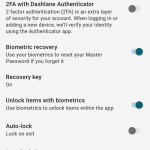Your Mac may not let you reinstall OS X due to insufficient storage or corrupted installation files. Check your available storage and create a backup before attempting a reinstallation.
Are you encountering difficulties reinstalling OS X on your Mac? We will explore the common reasons why your Mac may be refusing to reinstall the operating system. We’ll also provide step-by-step solutions to help you troubleshoot and resolve the issue efficiently.
By following these tips, you can ensure a smooth reinstallation process and get your Mac up and running without any further delays. Let’s delve into the possible causes of this issue and find the best ways to overcome them.
Common Issues With Os X Reinstallation
One of the common issues when reinstalling OS X on a Mac is software compatibility. Some older Mac models may not support the latest version of OS X, which could prevent a successful reinstallation. It is essential to check the system requirements of the OS X version you are trying to install and verify if your Mac meets those requirements.
Hardware issues can also hinder the reinstallation of OS X. Damaged or faulty hardware components such as the hard drive, RAM, or graphics card can cause installation failures. It is advised to perform a hardware diagnostic test to identify any potential hardware issues before attempting to reinstall OS X.
Software Compatibility
When reinstalling OS X on your Mac, keep in mind the compatibility of the software.
Older OS versions may not be supported by the latest OS X installation process.
Check for any storage limitations that could hinder the reinstallation process on your Mac.
Hardware Issues
|
Incompatible Hardware: Some Mac models may not support the latest OS X updates due to older hardware components. Firmware Problems: Outdated firmware can prevent a successful OS X reinstallation, requiring firmware updates or fixes. |

Credit: www.reddit.com
Resolving Software Compatibility
Check Compatibility List: Before attempting to reinstall the macOS X operating system on your Mac, it is crucial to ensure that the version you are trying to install is compatible with your specific Mac model. Check the official compatibility list provided by Apple to see if your Mac is compatible with the OS X version you are trying to install. This list is regularly updated, so it is essential to double-check.
Free Up Disk Space: Another common reason why your Mac may not let you reinstall OS X is insufficient disk space. Remove any unnecessary files and applications to free up disk space on your Mac. Consider moving large files to an external storage device or utilizing cloud storage services to help prevent any disk space issues.
By ensuring compatibility and freeing up disk space, you can successfully reinstall the OS X on your Mac and address any software compatibility issues you might be facing.
Addressing Hardware Issues
When reinstalling OS X on a Mac, make sure to check the minimum system requirements to ensure compatibility. It’s also important to update the firmware on your Mac to avoid any hardware issues that could prevent the installation process.

Credit: www.reddit.com
Preparing For Reinstallation
Before attempting to reinstall OS X on your Mac, it is crucial to back up all important data. Use an external hard drive or cloud storage service to ensure that your files are safe and accessible. Additionally, verify your internet connection to ensure a smooth installation process. A stable and reliable internet connection is essential for downloading the necessary files and updates during the reinstallation process.
Reinstalling Os X
When you encounter issues with your Mac and need to reinstall OS X, there are a few methods you can try. One option is to use Recovery Mode, which allows you to perform various troubleshooting tasks, including reinstalling the operating system.
Recovery Mode can be accessed by restarting your Mac and holding down the Command and R keys simultaneously. This will take you to the macOS Utilities window, where you can choose to reinstall OS X.
Another method is to create a bootable USB installer. This involves downloading the macOS installer from the App Store and using a USB flash drive to create a bootable installer. With this option, you can reinstall OS X without an internet connection.
Before proceeding with any of these methods, it’s crucial to back up your data to ensure that you don’t lose any important files during the reinstallation process. It’s also recommended to have a stable internet connection for a smoother experience.
Credit: discussions.apple.com
Seeking Professional Help
Having trouble reinstalling OS X on your Mac? Seeking professional help can address technical complexities efficiently. Professionals ensure a seamless OS X reinstallation process for optimal device performance.
| Contact Apple Support | Consult an Authorized Service Provider |
Frequently Asked Questions For Why Wont My Mac Let Me Reinstall Os X
Why Is My Mac Not Allowing Me To Reinstall Os X?
If your Mac isn’t letting you reinstall OS X, it may be due to insufficient storage space, incompatible installer or corrupt installation files. Checking your storage, ensuring compatibility, and downloading a fresh installer from the App Store can often resolve the issue.
What Should I Do If My Mac Keeps Rejecting Os X Reinstallation?
If your Mac keeps rejecting the OS X reinstallation, try resetting the NVRAM and SMC, which can resolve various system-related issues. Additionally, ensure that your Mac meets the minimum hardware requirements for the OS X version you’re trying to install.
Can Outdated Firmware Prevent Os X Reinstallation On Mac?
Outdated firmware can indeed hinder OS X reinstallation on Mac. Updating the firmware to the latest version can resolve incompatibility issues and pave the way for a successful OS X reinstallation. Be sure to check for firmware updates through the Mac App Store or the Apple website.
Conclusion
To conclude, troubleshooting Mac OS X installation issues can be frustrating, but there are several possible solutions to explore. By ensuring that your Mac meets all the system requirements, checking for any hardware or software conflicts, and using the appropriate installation method, you can increase the chances of a successful reinstallation.
Remember to backup your important files and seek assistance from Apple Support if needed. With patience and perseverance, you’ll be able to get your Mac back up and running smoothly.









